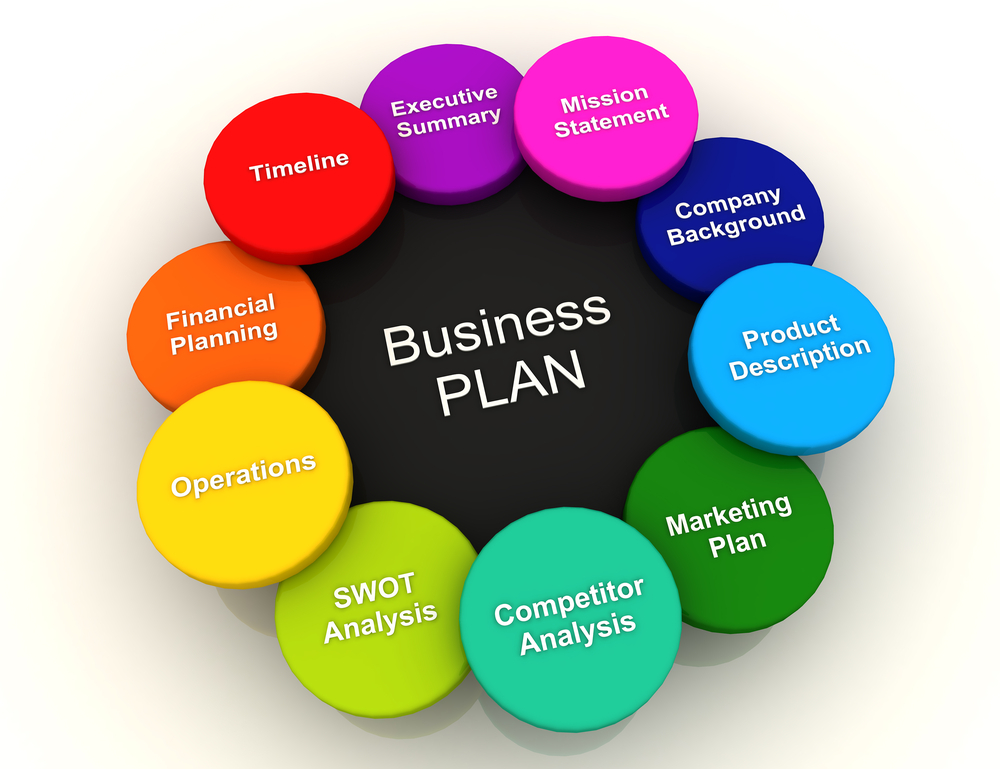If you want to start a successful business then you need a business plan to turn your business idea into reality. A business plan clearly shows the company objectives as well as its strategy for achieving them.
What Is Business Plan?

The best way to carry out the most great business ideas into reality is to have a plan. A business plan is a written document outline that details your business’s financial objectives and describes how you’ll achieve them. A strong, business plan will offer a comprehensive roadmap for the business growth and development. It can also help to reach out to prospective investors and or venture capitalists which can improve your chances of success.
Why do you need a business plan?
The basis of any business is its business plan. A good business plan can help you at every stage of starting and operating your business. Your business plan will act as a guideline for how to structure, manage, and expand your new business. It helps you consider the important aspects of your business and what you need to do to reach your goal. Your business plan may be able to attract new investors or business partners. Because most venture capitalists and all banking institutions won’t invest in a startup or small firm without a strong, written plan. The following are the main arguments in favor of planning:
- Businesses that have a business strategy expand 30% more quickly than those businesses that don’t plan.
- Business owners that have business plans are twice as likely to expand, get investors, or obtain loans. Because most venture capitalists and all banking institutions want to invest in firms that have a strong, written plan.
- A business plan helps you reduce your business risk by predicting potential cash flow issues and dealing with any potential obstacles.
How to write a business plan?

In this article, we’ll talk about How to write a business plan and go over everything you need to know to create a profitable business plan and make your idea a reality. A well-written business plan should all be included your business’s objectives, products or services, and financial situation.
Category of Business Plan:
The majority of businesses fall into two categories, Traditional business plan, and lean business plan.
1. Traditional Business Plan Format:

If you’re really detail-oriented and want a comprehensive plan, you might prefer a traditional business plan format. Traditional business plans are more common and have a standard format. It encourages you to go into detail in each section. They can be dozens of pages long. Traditional Business Plan consists of a combination of the following nine sections:
1.Create an executive summary:

An executive summary is an overview of your business and plans and comes on the first page of your business plan and ideally consists of only one to two pages. It should have a mission statement, a short description of the products or services provided, an overview of your target market, a brief description of your team, a summary of your financials, and your funding expansion requirements.
2. Describe your business:

The next section is your company description, which should include details like the registered name of your business, address of your place of business, names of important business figures, business objectives, and special or technical expertise of your team individuals. It also includes business history, the legal form of your firm, such as a sole proprietorship, partnership, or corporation, and level of involvement that each owner, and a list of the customers and organizations that your company intends to serve.
3. Conduct the Market Analysis:

The purpose of market analysis is to identify the advantages and disadvantages of competitors in your market. Investors and lenders will be curious about how your product differs from the competition. In the market analysis section, specify who your competitors are. Talk about what they do well, and point out what you can do better. Explain if you are serving a different or underserved market.
4. Organization and Management:

The organization and management section should detail the legal structure of your business and who’s running your business. You should state whether to register your business as a C or an S Corporation, a limited partnership, or a sole proprietorship. If your business has a management team, utilize an organizational chart to highlight the roles, responsibilities, and connections among the individuals as well as the internal organization of your business.
5. List the products and services you offer:

In this portion, you should discuss the details of the goods or services you offer or intend to offer. It should include an explanation of how your product or service works, the price of your product or service, how it benefits your customers, and what the product life cycle looks like. Explain If you are researching and developing for your service or product.
6. Describe your sales and marketing Plan:

The marketing and sales plan section of your business plan details how you plan to reach your target market segments, how you will attract and retain customers, how do you plan to sell these target markets, what are your pricing plans, and what kind of activities and partnerships do you need to make your business successful?
7. Conduct a Business financial analysis:

In this section, you need to outline your Business financial requirements. Your purpose is to concisely describe how much financing you’ll require over the next five years and explain in detail how you plan to spend your finances. Indicate if you want stock or debt, the conditions you want to be used, and the time frame your request will span. Always give a detailed account of your long-term financial goals, such as paying off debt or selling your company.
8. Create a financial projection:

If you’re looking for funding or investors, this is an essential component of your business plan. It describes how your company will make enough money to pay back the loan or how you will provide investors with a respectable return. In this section, you will give projections of your company’s monthly or quarterly revenues, costs, and profits for a minimum of three years with the future figures presuming you’ve gotten a fresh loan.
9. Include additional information in an appendix:
In the appendix section, you can include any supporting documents or other content, such as sketches, tables, credit histories, resumes, product pictures, letters of reference, licenses, permits, patents, legal documents, or other relevant information that you feel is too long or inappropriate to include elsewhere in your business plan.
2. Lean Business Plan Format:

If your company is reasonably straightforward and improves your business plan frequently, you might prefer the lean startup plan. lean startup business plans are less frequent and follow the same standard format. They focus on highlighting only the most important details of the key elements of your business. They are usually only one page long and can be made in less than an hour. Lean startup formats simply include a few components to explain the value proposition, infrastructure, clients, and financing of your business.
1. key collaborations:
It is the first and most important part of your business plan. In this section, you need to identify the additional companies or services in which you will need to run your business. you need to consider and enlist your suppliers, producers, subcontractors, and other important allies.
2. Competitive Analysis:
In Competitive Analysis describe how your company will acquire a competitive edge. Explain who your competitors are. Talk about what they do well, and point out what you can do better.
3. Crucial Resources:
You must give the business resources in the business plan. Here you should list all the resources you will use to give your consumer value. Your most valuable resources may be your personnel, finances, or intellectual property.
4. Value statement:
The value statement is the key component of the lean business plan. In this section, you need to create a strong statement about the distinct value your business offers in the market.
5. Customer Relationships:
In this section, you should explain the customer relationships with your business, and how consumers will interact with your business. Describe the entire consumer experience from start to end.
6. Customer Segments:
When describing your target market, describe how you plan to reach your target customer segments, and how you attract and retain customers. You need to explain the customers and organizations that your company wants to serve.
7. Channels Strategy:
In this portion of the business plan, you should write down the key methods of communication you’ll use with your clients. Most companies employ a variety of channels, which they gradually improve.
8. Income Sources:
In this section, you need to describe the income sources of your business. Describe how your business will generate revenue. Direct sales, membership dues, and the sale of advertising space are a few of them. List all of your company’s revenue sources if it has more than one.
9. Cost Structures:
The cost structure is an important part of your business plan. Here you should explain how will your business prioritize cutting costs or maximizing value? You need to list the most major expenses you’ll incur during the business operation.
Does the business need a simple or detailed plan?
The stage of your business and intended audience dictates the level of depth your plan needs. Some companies need extensive business plans that might be up to 100 pages long. Startups and small enterprises need to have a clear plan that focuses on finances and strategy.


